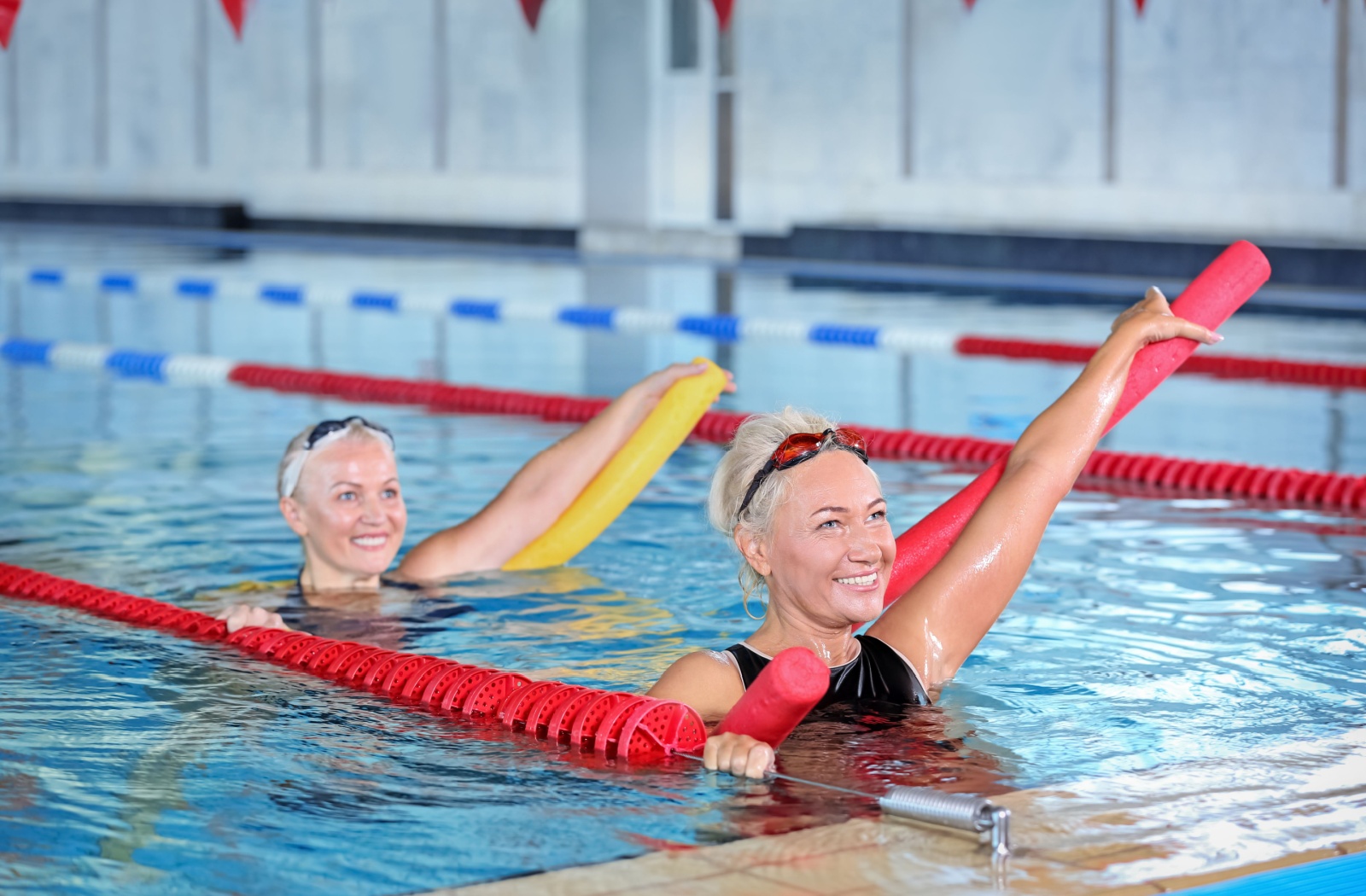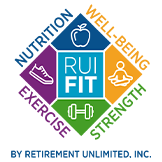Key Takeaways
- Aquatic therapy is a gentle, low-impact exercise option that can offer health benefits especially suited for seniors.
- Water exercises can help reduce joint pain, making movement more comfortable and enjoyable.
- Regular water-based exercises can improve mobility and overall strength.
- Aquatic therapy helps reinforce balance, reducing the risk of falls.
- Beyond physical benefits, it provides a fun and engaging way to stay active, supporting both mental and physical well-being.
Water-based exercises provide a gentle and effective way to support rehabilitation and wellness. Aquatic therapy offers 5 key benefits: reduced joint pain, improved mobility, increased strength, reinforced balance, and a fun, low-impact way to stay active.
For seniors, it’s an ideal option that delivers advantages traditional land-based exercises often can’t match.
What Is Aquatic Therapy?
Aquatic therapy, also known as water therapy or hydrotherapy, involves performing therapeutic exercises in a heated pool under the guidance of trained professionals.
The water temperature typically ranges from 83°F to 88°F, creating a comfortable environment that supports healing and movement.
Unlike recreational swimming, aquatic therapy focuses on specific therapeutic goals. Sessions are tailored to individual needs and may include walking, stretching, resistance exercises, and balance training—all performed in chest-deep water.
How Does Aquatic Therapy Work?
The unique properties of water make it an ideal medium for therapeutic exercise. Water provides buoyancy, reducing the impact on joints while supporting body weight. Seniors can move more freely and with less pain than they might experience on land.
Water also creates natural resistance, helping to strengthen muscles without the need for heavy weights. The hydrostatic pressure of water can reduce swelling and improve circulation, while the warmth helps relax muscles and increase flexibility.
What Are the 5 Key Benefits of Aquatic Therapy?
Aquatic therapy provides a unique and effective means of enhancing physical health and well-being, particularly for individuals with limited mobility or chronic pain.
Incorporating water activities into your rehabilitation or fitness routine can offer a wide variety of valuable benefits.
Physical Benefits of Aquatic Therapy
Water’s buoyancy significantly reduces stress on joints, making movement easier and less painful for seniors with arthritis or other joint conditions.
The resistance provided by water helps build muscle strength and endurance gradually, without the jarring impact of traditional weight training.
Many seniors find they can walk, stretch, and exercise in water when these activities cause discomfort on land. The gentle resistance helps improve flexibility and range of motion while supporting cardiovascular health through low-impact aerobic activity.
Mental Health Benefits of Aquatic Therapy
The soothing nature of warm water can have profound effects on mental well-being. Many seniors report feeling more relaxed and less anxious during and after aquatic therapy sessions.
The weightless sensation in water can provide a sense of freedom and joy, especially for those who may feel limited by mobility issues on land.
Social interaction during group sessions also combats isolation and loneliness, common challenges among older adults. The shared experience of overcoming physical limitations together builds confidence and emotional resilience.
Cognitive Benefits of Aquatic Therapy
Aquatic therapy requires coordination, balance, and mental focus, which can help maintain cognitive function and overall well-being. Learning new movements in water challenges the brain to adapt and process information differently than on land.
The multisensory experience of water therapy—feeling the water’s resistance, maintaining balance, and following instructions—provides valuable cognitive stimulation that may help preserve mental sharpness.
Medical Benefits of Aquatic Therapy
Healthcare professionals often recommend aquatic therapy for various conditions common among seniors. The hydrostatic pressure of water can help reduce swelling in legs and feet, while the warmth improves circulation and reduces muscle stiffness.
For seniors recovering from surgery or managing chronic conditions like fibromyalgia or osteoporosis, water therapy provides a safe environment to maintain or regain function without excessive strain on healing tissues.
Social Benefits of Aquatic Therapy
Group aquatic therapy sessions create opportunities for meaningful social connections. Seniors often form friendships with fellow participants, sharing encouragement and celebrating progress together.
The supportive group environment reduces the intimidation factor that some seniors feel about exercise, creating a welcoming space where everyone works at their own pace while enjoying the camaraderie of shared goals.
How Can You Help Seniors Stay More Active?

Staying active doesn’t have to be daunting—it can be fun and rewarding, especially for seniors. The key is finding enjoyable and safe ways to move that fit individual needs and abilities.
With the right approach, physical activity can support health and well-being while also being an enjoyable part of daily life. Start small, stay consistent, and enjoy the journey!
Start with Enjoyable Activities
Choose activities that feel fun rather than demanding. Water-based exercises are a great option, as they feel more like play than traditional workouts.
Incorporate Social Connection
Group classes or exercising with a buddy can make staying active more engaging and enjoyable. Companionship and shared accountability often boost motivation.
Prioritize Safety
Always consult a healthcare provider before starting a new exercise program, especially if you have an existing health condition. Professional guidance helps confirm activities are safe and beneficial.
How Can We Take a Holistic Approach to Well-Being?
Physical activity is just one piece of the wellness puzzle. At Paul Spring, part of Retirement Unlimited, Incorporated (RUI), we understand that true well-being comes from addressing all aspects of life—physical, mental, social, and emotional.
Our RUI FIT program combines various forms of exercise, including aquatic therapy when available, with nutrition education and wellness coaching. Staying active should be enjoyable and sustainable, not a burden.
Through our holistic approach, residents discover that wellness isn’t about perfection—it’s about finding joy in movement, connection with others, and confidence in their abilities.
Whether it’s gentle water exercises, group fitness classes, or simply taking a walk with friends, every step toward activity is a step toward a more fulfilling life.
Contact us today to see how our community’s focus on blending exercise, wellness, and social interaction can benefit you.












